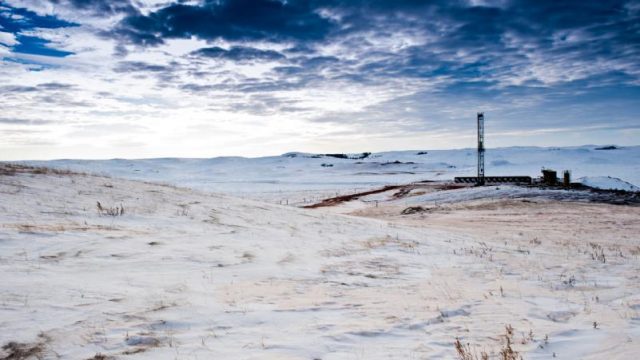Is Dirty North Dakota Snow Causing Climate Change?

According to a group of researchers, North Dakota’s snow is dirty (mostly from blown dirt and dust), and that the dirty snow is contributing to climate change:
‘The (darker) snowpack absorbs more sunlight, contributing to the warming of the snowpack, warming of the surface air and earlier melt of the snowpack,’ she said from her office in Seattle.
Exposing the darker soil beneath adds to that warming trend, causing more snow to melt. This self-reinforcing cycle happens each spring but, when snow melts earlier, it means there are more warmer days compared to cooler days in the year, contributing to climate change, said State Climatologist F. Adnan Akyuz at North Dakota State University.
He said farmers here enjoy a growing season that is on average 12 days longer than 100 years ago because of the warmer climate.
As you might expect, one of the causes of the dirty snow is oil and gas activity in western North Dakota (all the trucks and construction have been kicking up a lot of dirt and dust), but do these conclusions about the impact on the climate really make sense?
“There is an immediate problem with this oil industry blame narrative – oil production in the state didn’t start to become significant and increase dramatically until 2008,” writes Sierra Rayne at the American Thinker. “In the seven years since this time, four have had below normal temperatures. Add to that a correlation toward cooling – not warming – in the state’s annual temperatures over the last three decades, coupled with no significant trend since 1970, either, and the dirty snow hypothesis appears to run into trouble.”
I’ll say.
Rayne points out another problem too: North Dakota’s growing season has actually been getting shorter. She notes that while the growing seasons for the Grand Forks and Fargo areas have increased over the last century, according to data from the National Weather Service, the growing season for the Bismarck and Williston areas (which encompass over 80 percent of the state) have declined:
Grand Forks and Fargo are about as far away from the “dirty” snow of the oil patch as you can get, and those areas have seen a warming trend over the last century. The areas closest to the oil patch have actually seen a cooling trend.
This is the opposite of what these researchers are claiming. That seems problematic for their conclusions.
I’d also like to see some historical context before we draw conclusions. I imagine the dust bowl era in the Great Plains region also saw some very dirty snow.





